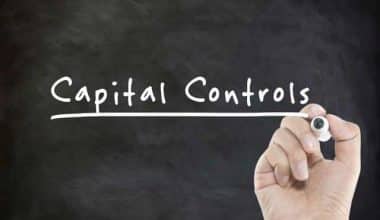The mundane world is riddled with deception, corruption, and lies. And no one wants to be a victim of fraud. You hear about fraud all the time in the news, but you usually think it will never happen to you. Today’s con artists use more devious schemes than ever before, and even the most circumspect individuals fall victim to their schemes. Ponzi schemes, money laundering, intellectual property infringement, phishing, corporate fraud, and other schemes are examples of these. In other words, those found guilty of any level of fraud may face severe penalties. This article will look at the various types of fraud that exist in the banking, law, business, accounting, credit card, and insurance industries, among others.
What Are the Two Areas of Fraud?
The courts divide fraud into two primary categories: criminal and civil. Civil fraud occurs when a deliberate distortion of facts is made. Criminal fraud occurs when theft is included in the fraud.
Types of Fraud in Insurance
Insurance fraud, generally, is a deliberate deception committed against or by an insurance company or agent for financial gain. This fraud may be committed at various stages by aspirants, policyholders, third-party petitioners, or professionals who provide services to petitioners. Insurance agents and company employees may also commit insurance fraud. The following are some other types of commonly committed acts or schemes of insurance fraud
Homeowners Insurance Fraud
Types of home insurance fraud include:
- False or exaggerated property damage
- Inflated robberies or theft reports
- The willful or malicious burning of property
- Intentional damage claim
Health Care Insurance Fraud
Types of health care insurance fraud include:
- Billing for services not rendered
- Billing for a more expensive service than was provided
- Providing and billing for unnecessary services while claiming that the services were necessary
- Double billing
Auto Insurance Fraud
Types of auto insurance fraud include:
- Fraudulent or exaggerated theft repair claim
- Owner “give up” (false stolen car report) “Jump in” (someone not in the vehicle at the time of the accident)
- Accidental staging
- Intentional damage claim
- Falsifying the date or events of an accident to obtain coverage
- Rate evasion
Disability & Life Insurance Fraud
Types of disability & life insurance fraud include:
- False death claims
- Debunked beneficiary claims
- False disability claim
- Submission of false documents to fraudulently continue a disability claim
Workers’ Compensation
- Working while accumulating workers’ compensation benefits
- Injury feigning
- Claiming to be badly hurt at work when the injury occurred elsewhere
- Employer under-reporting payroll and/or employee count to obtain a lower premium
- Consciously misclassifying employees’ job codes
- Employer fails to carry workers’ compensation insurance
Agent / Industry
- Premium fraud
- Unlicensed and/or unauthorized activity
- “Churning” – Falsifying information to a consumer to persuade them to use the cash value of an existing policy to purchase a new, usually more expensive policy.
What Are the 3 Components of Fraud?
The notion asserts that there are three elements that, when combined, result in fraudulent activity. They consist of a perceived unshareable financial need (motivation/pressure), a perceived chance to conduct fraud, and the explanation for committing fraud.
What Is the True Name of Fraud?
Application fraud, often known as “true name fraud,” occurs when an identity thief utilizes your personal information (such as your Social Security number) to open new accounts in your name. Credit card account statements are sometimes sent to the thief’s address rather than the victim’s, so you may not learn about the theft for months.
Types of Fraud in Banking
Types of fraud in banking involve the dishonest use of another person’s personal information to gain access to a financial institution. There are several types of fraud in banking, and understanding them can help you prevent it. These include:
- Check Fraud: Check fraud remains a major concern. A check contains lots of information for a criminal, such as your name, address, account number, and routing number. The fraudster will frequently use chemicals to “wash” the information from a written check, create counterfeit checks, or simply forge a check without the victim’s consent.
- Wire Transfer Fraud: Scammers trick victims into wiring money to their accounts for a variety of fictitious reasons. This includes a ransom for a “kidnapped” relative, debt collection, lottery winning fees, failure to appear in court, and so on.
- Loan Fraud: This occurs when thieves use your personal and financial information to obtain a loan in your name. While banks have a more stringent loan application process, many lenders and smaller financial institutions require very little information. In most cases, an individual is unaware of the fraud until the lender makes recurring debt collection attempts.
- Account Takeover: When a criminal uses another person’s existing account to make illegal purchases or withdrawals. Account information is typically linked to a credit or debit card. This happens when the victim’s information is stolen from the victim’s possessions or online accounts. Other types of banking fraud include duplication or skimming of card information, cheque kiting, forged or fraudulent documents, forgery, altered cheques, etc
Types of Fraud in Accounting
Accounting fraud, generally, is the deliberate manipulation of financial statements to create the appearance of a company’s financial health. Furthermore, an employee, accountant, or the organization itself may deceive investors and shareholders. The three major types of accounting fraud are listed below.
#1. Overstating Revenue
Accounting fraud occurs when a company overstates its revenue. If the company’s revenue is insufficient To conceal this situation, the firm may claim to generate more income on financial statements than it actually does. Hence, the company’s profits would be amplified on its financial statements. If the company overstates its revenues, the firm’s share price will rise, creating a false impression of financial health. Other types of accounting fraud include misstating assets and liabilities, and expenses not recorded.
#2. Misstating Assets and Liabilities
Misstating assets and liabilities are types of accounting fraud that occur when a company misrepresents or understates its assets. A company, for example, may overstate its current assets while understating its current liabilities. Hence, this type of fraud deceives investors about a company’s short-term liquidity.
#3. Expenses Not Recorded
Accounting fraud also occurs when a company fails to record its expenses. On the income statement, the company’s net income is overstated, while its costs are understated. However, this type of accounting fraud creates a false impression of a company’s net income, which results in a fraudulent act. Other types of fraud in accounting include demand draft fraud, remotely created check fraud, uninsured deposits, etc
Types of Fraud in Law
Federal and State laws, prosecute various types of fraud through the United States attorneys. But this depends on the circumstances of the case. Below are the most common types of federal law and state fraud crimes.
#1. Mail and Wire Fraud
The use of regular mail or any form of wired communications technology, such as telephones or the internet, is part of a fraudulent scheme. Federal prosecutors may add wire or mail fraud charges to bribery and corruption charges. Similarly, fraudsters use charges of wire or mail fraud in the prosecution of racketeering and RICO Act violations.
#2. Tax Fraud
When a taxpayer attempts to avoid paying federal income taxes. Tax fraud examples include knowingly underreporting taxable income, overestimating business deductions, and simply failing to file a tax return.
#3. Stock and Securities Fraud
Stock and securities are types of law fraud that involve the deceptive sale of stocks, commodities, and other securities. Ponzi or pyramid schemes, broker embezzlement, and foreign currency fraud are all examples of securities fraud. Stockbrokers or investment banks usually commit fraud when they persuade people to make investments based on false or exaggerated information, or on “insider trading” information not available to the general public.
#4. Medicare and Medicaid fraud.
Medicare and Medicaid are types of law fraud that occur when hospitals, health care companies, or individual healthcare attempt to obtain illegitimate government reimbursements by swindling for services or performing unnecessary tests or medical procedures.
Types of Fraud in Business
Business fraud generally, refers to criminal acts by high-ranking employees in a company or attacks on the companies themselves. However, it involves someone stealing money from someone else under the guise of business transactions. Below are different types of fraud in the business.
#1. Payroll Fraud
Payroll frauds are types of fraud in business that occur when someone takes advantage of a company’s payroll system to steal money by submitting false logbooks to pay individuals or others more than what they earn. Giving out unlawful bonuses and sending money to a phony employee or former employee.
#2. Financial Statement Fraud
For a variety of reasons, an employee or business owner may commit financial statement fraud. Most commonly, the fraudster will exploit financial records to make their assets, income, or total net worth appear larger while making their debts, liabilities, and losses appear smaller. This type of fraud is done to obtain loans or avoid the consequences of failing to meet financial goals.
#3. Asset Misappropriation
Asset misappropriation is the most common type of employee fraud, and it comes in two ways
- Cash misappropriation: This involves taking money directly from the company, whether by transferring funds from company bank accounts; making illegitimate purchases on a company card, or taking cash directly from the safe.
- Non-cash misappropriation: This involves taking non-cash assets from the company, which could be office equipment, supplies, or inventory without authorization.
#4. Tax Frauds
Tax frauds are types of fraud in business that occur when a company avoids paying high tax rates because it is in a higher tax bracket. However, business owners may attempt to reduce their tax liability by understating their company’s earnings or claiming false deductions.
#5. Identity Theft
Identity theft is an intricate type of business fraud in the sense that a company can be both the perpetrator and the victim. This occurs when someone steals another person’s personal information and then uses that information to steal from them.
A company can commit identity theft by stealing its customers’ bank account information or other personal information. Employees who have access to sensitive information may use that information to steal from a company or commit other crimes, or another company may steal from them. However other types of business fraud include; billing schemes, bribery, kickbacks, price-fixing, etc
Types of Fraud in Credit Card
Credit card frauds are types of fraud that occur through the theft of the cardholder’s personal information. The following are the most common types of credit card fraud.
- CNP (card-not-present) fraud: “Card not present” fraud occurs when a card is not physically present and is usually an online fraud or over the phone.
- Counterfeit and skimming fraud: Counterfeit and skimming frauds occur when information is illegally obtained to create a counterfeit credit card.
- Lost and stolen card fraud: Lost and stolen card fraud occurs when a card is lost or stolen. If your card is lost or stolen by a pickpocket, they can use it until it is canceled, suspended, or the credit limit is reached.
- Card not received fraud: “Card not received” fraud occurs when a customer orders a card but never receives it. These types of credit card fraud occur when a card is intercepted before it arrives or, more likely when your card burglar simply steals it from your mail slot.
- False Application Fraud: False application fraud occurs when the fraudster creates an account using the identity or information of someone else.
Types of Fraud FAQs
What are the types of frauds in auditing?
Frauds in auditing include manipulation, falsification, or modification of records or documents, misappropriation of assets, and suppression or omission of transactions from records.
What are the causes of frauds?
Causes of Frauds
- Personnel risks
- Cultural risks
- Autocratic management style
- Personality mismatch
- Results at any cost
- Lack of commitment to control
- Complex structures
- Poorly supervised remote locations
- Poorly defined business strategy
- A mismatch between growth and system development;
What is the difference between appropriation and misappropriation?
Appropriation, also known as misappropriation, is the unlawful use of a person’s name, photograph, likeness, voice, or endorsement, usually for monetary gain. Although appropriation may involve speech or communication, the practice is not protected by the First Amendment.
What is external frauds?
External fraud, or fraud from outside of an organization, commonly refers to fraud committed by vendors, customers, or competitors.
Related Articles
- Avoiding Lucrative Trading Schemes in the Investment Business
- Forensic Audit: Cost and Procedures in Carrying Out an Audit
- Check Fraud: Definition, Types, How to Avoid them (+ Quick Tools)
- Disgruntled Employee: Handling A Disgruntled Employee
- What is Forensic Accounting: Overview, and How it Works.
- Business Email Address: How To Set Up Business Email
- DUAL CITIZENSHIP: Process for Obtaining Dual Citizenship in the US
- WHAT IS A CERTIFIED BANK CHECK: How to Get One






